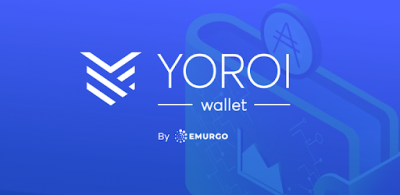What is the K parameter?
The K parameter determines the desired number of pools in the Cardano ecosystem. The parameter does not define the maximum of pools that can be registered and that can produce blocks. At the time of writing, the K parameter is set to 150 while there are over 1200 registered pools that can hypothetically produce new blocks. In reality, approximately 400 pools succeed in producing at least one block in every epoch. The K parameter sets the so-called saturation point. The saturation point is the maximum number of ADA coins that can be delegated to a pool and at the same time rewards grow with the number of delegated coins. Once a pool exceeds the maximum the reward begins to diminish. Thus, every operator tries to approach the saturation point in order to maximize the reward. There are basically two ways to achieve it. Firstly, the operator might be rich and use its own ADA coins so she does not depend on delegated coins. Secondly, other ADA holders called stake-holders or delegators, decide to delegate their coins to a pool. Usually, a total pool stake (all ADA coins delegated to a single pool) consists of coins that belong to the pool operator plus coins that have been delegated to the pool by other people.
The K parameter is one of many other parameters and it is not the purpose of the article to explain all of them. It should be said that a pool is eligible for a reward only if it produces at least one block in an epoch. If it is the case then the reward is distributed to a pool operator and afterward also to all delegators. A pool needs to have a certain minimum size to be able to produce blocks in every epoch. Currently, you can find many pools with a small total stake that have nearly no chance to be assigned the right to produce a block. So basically these pools have a small chance to be rewarded by the Cardano protocol.
It should be said that the saturation mechanism was designed in order to prevent the centralization of power in a few big pools. Delegators are economically motivated to delegate coins to other available pools when a pool to which they have currently delegated their coins reaches the saturation point. It still depends on delegators whether they choose a different pool of other operators or a new pool of the same operator. From the decentralization point of view, it makes sense to support new operators with a single small or middle-sized pool. It is not possible to prevent one entity from creating more pools. One entity can even create more pools with different names and identities.
Saturation can be easily calculated from the circulating supply of ADA coins and the number of pools that are supported by the protocol. As we have already said, the K parameter is set to 150. So when you divide the circulating supply by the K parameter you will get the saturation point.
Saturation = ~31,600,000,000 / 150 = ~210,600,000
What is a fair reward for pool operators?
Pool operators are rewarded every epoch, which is every 5 days if they succeed in the creation of blocks. The protocol strictly defines a fixed part of the reward, which is in a minimum of 340 ADA coins. Operators can increase the fixed part if they wish. In addition, they can specify a margin which is % of the pool reward after deduction of the fixed part. Let’s assume that a pool obtained 120,000 ADA coins as the pool reward from the protocol in a given epoch. The operator decided to keep 340 coins as the fixed reward and set the margin to 2%. The reward is calculated in the following way:
- Pool reward: 100,000 coins
- Rest after deduction the fixed part: 10,000–340=99,660
- Margin: 2% from 99,660 gives ~1,993
- Operators reward: 340 + 1,993=2,333
- The reward for delegators: 100,000–2,333=97,667
This was a pool that is close to the saturation point. If the pool reward would be only 10,000 ADA coins for a small pool, then the reward would be smaller.
- Pool reward: 10,000 coins
- Rest after deduction the fixed part: 10,000–340=9,660
- Margin: 2% from 9,660 gives ~193
- Operators reward: 340 + 193=533
- The reward for delegators: 10,000–533=9,467
As you can see, for the bigger pool, the main income is the 2% margin while for the small pool it is the fixed reward of 340 ADA coins. Notice, that when the pool reward is 1000 coins then 340 coins is ~1/3 of that. It means that only 2/3 coins are left for rewarding delegators. You can often see that small pool operators take 20–30% of the pool reward even if they have set low or even zero margins. Big pools that are close to the saturation point take ~2–5% of the pool reward even if they have set 2–3% margins. It is interesting that the minimum monthly reward for pools that regularly produces at least one block per epoch is 6 * 340 coins. It is in summary 2040 coins per month. It is ~$200 at the current price but it can be ~$2000 when ADA gets to $1. Notice that the fixed part gets every pool operator even when she has set the margin to 0.
At the time of writing, many pools that have a stake between 100M — 150 ADA coins, have set the margin around 2% and operators keep the fixed reward to 340 coins. It is very probable that they accommodate the margin by the setting of the majority in this range. Pools, that are close to saturation, have set a higher margin and you can easily find values 3–5%. It seems that operators with lower pool stake try to decrease the margin to attract delegators and get closer to saturation. Very often you can find the following pattern. The lower the pool stake is the lower is the margin.
What is a fair reward? We have no surprise and no exact numbers for you. It is impossible to define a fair reward since the conditions and expectations of pool operators are individual and depend on many factors. Cardano is a global protocol and 1000 ADA coins have a different value across the world. Let’s have a look at regional differences in salaries. For example, a median monthly salary in Europe can be in the range from ~$1200 to ~$6000. It is mostly below ~$1000 in countries of South America and in Russia. It can be ~$200 in some Asia countries including India and it is ~$50 in poor Africa countries. As you can see, there can be approximately a 100x difference between countries regarding salaries. At the time of writing, 1000 ADA can be roughly a monthly salary in some Africa countries or the price of a good family lunch in the USA. Salaries mostly influence the cost of living and many other things including the cost of operating a node. Let’s have a look at it from a different angle. Some people want to operate a Cardano pool as the main job and it is a full-time business for them. Thus, they expect an average salary in a given region. Others want to operate a pool as a hobby and they expect to cover the cost and have a little extra money. Expectations regarding rewards can be significantly different for different operators even if they are from the same region. From the point of the network, both operators can provide the service with the same level of quality. Let’s add yet another perspective. Some people need to get a reward to pay the cost and earn a little extra money. Some others want to keep ADA as an investment and sell it when the price will be 10x higher. Thus, they are willing to accept a smaller reward and wait. ADA is a volatile asset and people deal with the fact differently. Some are willing to take a risk and speculate while others not.
As you can see, there is no simple answer regarding a fair reward. The reward should cover the cost of operating a node and let the operator earn extra money. It is impossible to define how much extra money is fair. We believe that some people can be satisfied with a fixed reward, which is 2040 coins per month. We could talk about the quality of service. Some operators use the cloud, some IT experts can build a robust cluster solution at home, some others can use a reliable internet that they already have paid for the household and use a server that runs 24/7 anyway because of other services. From the point of view of the network, the preferred variant is probably a robust solution where Cardano full-node software runs on nodes that are owned by operators, they have dedicated internet connection and in the ideal case, there is a backup solution for the outage of electricity. Such a solution can be quite expensive and the monthly costs can be hardly covered by 2040 ADA coins at the current price. Let’s have a look at the needs of the network.
What does the network need?
In the first place, we should always take into account the best interest of the network. Pool operators can be considered as employees of the network. The network dictates conditions and it knows well what it needs from the employees. It is great that there is a huge interest in being an employee of the Cardano network. On the other hand, the network cannot employ all of them just because they want to. The network needs reliable employees that will operate full-nodes in the best possible quality in the long run. Employees are motivated economically. Thus, the network would like to see 150 saturated pools since only saturated pools provide the highest possible reward that can be further used for investment into the infrastructure. It is not in the best interest of the network to have 10,000 employees that cannot afford to invest in the infrastructure and thus into the quality of the whole ecosystem. An increase of the K parameter makes sense at the moment when more saturated pools will exist.
We can often see the argument that we need to strive for the maximum possible level of decentralization so we need more pools in the ecosystem. That is generally true but it has limits, though. When operating a pool becomes a lucrative position then it can be expected that pool operators will act honestly and they will have no interest in cheating. So, the network rather needs a smaller group of well-paid employees than an army of poor operators. It is not to say that poor operators will not act honestly but if it is easy and cheap to operate a Cardano pool then it can be quite easy to attack the network. Security is a very important attribute that is similarly important as decentralization. To become a successful pool operator must cost something. It can be either any kind of extra effort that will attract delegators or money. Again, when operators are somehow deeper engaged then they will probably act honestly and in the best interest of the network.
The price and volatility of ADA coins play some role as well. When the K parameter increases then the saturation point will decrease and thus pool operators will receive fewer coins as a reward. They can solve it by increasing the margin but it might not look nice from the point of view of delegators. We do not consider the price of ADA coins as a major obstacle for increasing the K parameter. At the moment, it is really more about the security and quality of the infrastructure.
Another aspect is also the number of delegators in the ecosystem. Cardano is a young project and currently, there are over 66,000 delegators. There are many whales and their decision regarding delegation can have a big impact on pools. It would be healthy to have more delegators and fewer whales. Anyway, it can be difficult for stake-holders to choose a pool to which they can delegate their coins. It is always easier to choose from a smaller number of pools.
In our view, it makes sense to increase the K parameter with the growing number of delegators but more important are the growing usage of the network and a higher number of saturated pools. If the K parameter was increased abruptly to 1000 then many pools would become oversaturated. We do not expect that the K parameter would be increased from 150 to 1000 in one step but give it a try. A new saturation level would be ~31,6M ADA coins. Operators with a saturated pool would have 6x smaller rewards so some of them would probably increase the margin 6x to achieve the same reward. This change would be beneficial for many current smaller pools since it is easier to reach the saturation level if it is smaller. Pools with stakes that would be around ~15M coins would be somewhere in the middle of saturation so they would be also profitable regarding the number of ADA coins.
Delegators probably have some reasons for delegating coins to pools. Many pool operators with over-saturated pools would likely create new pools and it is probable that a significant part of delegators would delegate coins again to them. On the other hand, some delegators might not want to delegate coins to operators that have more pools. Delegators can think that it is a bad idea regarding decentralization and they would rather delegate to a new pool. We would also see an influx of new operators so there could be 10,000 registered pools and the majority of pool operators could be in a similar situation as some current operators that struggle for a higher stake. The situation would just repeat with different numbers. But maybe we are wrong. At the moment, we do not think that we could see 10,000 independent pool operators. Cardano protocol needs higher adoption and significance to attract more pool operators.
It is important to say that Cardano is one of the best-decentralized projects in the whole cryptocurrency space. Thus, at the moment, there is no need to improve it. Pools that are close to saturation are currently able to create over 100 blocks per epoch. Pools, that are at 20% saturation, are able to create approximately 10 blocks per epoch. There are over 300 pools that regularly create blocks in the Cardano ecosystem. These numbers are great and with the current level of adoption, we consider it as sufficient. If the K parameter should be increased in the foreseeable future, we think that it would be sufficient to set it to 200 or 250 in maximum and then let it be for a few months if not a year. We should be rather conservative in changing key protocol parameters. Pool operators need a certain level of stability and predictability. Operating a pool is like any other business.
What is a fair margin?
Let’s go back to rewards and discuss the size of the margin. If you remember, we were not able to define what is a fair reward so we can hardly define what is a fair margin. On the other hand, there are certain needs of the network that should be satisfied and it can only happen if a smaller number of operators is well paid. Thus, it makes sense to try calculating some average reward that would be fair across the world and that would ensure that the network is well secure, decentralized, and scalable. We know that there is a certain reward border that can be subjectively considered as fair but it is difficult to objectively set the exact number. Thus, searching for the correct number is a controversial topic. Pool operators basically fight for rewards and there are more interested people than the network actually needs.
Pool operators need to attract delegators. Delegators can choose a few tools that help them to find a suitable candidate for the delegation. The problem actually is how to come up with a fair ranking mechanism. A ranking algorithm determines which pools are put at the top of a list and which are considered as not so attractive. As we have already said, it is difficult for delegators to choose one or a few pools from a huge list of candidates. Thus, pools that are on the top of the list can be selected by delegators with a higher probability. Providers of the ranking mechanisms have a significant influence on delegators regarding the selection of pools. They basically search for the correct reward border and think about how to make the ranking mechanism fair. It must be said that there always be people that will be happy and others that will be unhappy. Unfortunately, there is no solution that would make everyone happy.
It must be said that there is nothing like a fair margin. The margin can be subjectively perceived as fair even if it is objectively low from the point of view of others and it does not satisfy the needs of the network. Even if someone would make the most possible objective calculation of reward margin, someone would not agree with the result. The best that can be done is to be transparent, explain the procedure, and be open for discussion. Is it fair to consider pool operators that have the margin set above 1% as good operators and the rest as bad operators? Well, it is not subjectively fair from the point of operators but it is hopefully in the best interest of the network that somebody sets the border.
Creating a ranking mechanism for pools is a quite challenging thing since it is needed to take into account many aspects and give them a priority. To name a few attributes, besides the margins, there are pledges of operators, the level of saturation, the number of produced blocks, the number of delegators, the number of pools that a single entity operates, luck, the occurrence of changes in reward setting, and many others. Even if the margin would not be taken into account, there is no simple solution on how to fairly display a higher amount of pools. The authors of the ranking mechanisms can have different opinions and preferences. It is healthy for the ecosystem to have more tools that can help to find a suitable pool.
How to reach saturation and be rewarded?
Operators are like other people and they want to maximize their profits. The competition is actually healthy. Operators must bring some value to the ecosystem to be rewarded by the protocol through the delegators. It is not sufficient to just set very low or even zero margins and wait that a pool becomes profitable. It would be so easy and everybody can do it. Does the network really need it? No, and it could be dangerous. Imagine that it would cost nearly nothing to operate a pool that would produce many blocks. Such a pool could be misused for an attack. Moreover, other operators would have to decrease their margins as well, and thus, they would not be able to pay for high-quality infrastructure or do some useful work for the community. It would also be contra-productive.
When there is a big competition in the system it is needed to be creative and attract people. Operators can consider some form of marketing, they can start creating some content, educational materials, creation some useful tool or application, work with local communities, or attract some big institutional investors. There are plenty of possibilities and it is necessary to do something to succeed in a competitive environment. It can be expected that Cardano will have much bigger traction in the next few years. Many entities will be interested in operating a pool and the ecosystem will be even more competitive. It is smart to become an active and visible member of the community as soon as possible to get some advantage. Cardano is a young project and it is still time to enter it and succeed. Delegators might not often understand the ranking mechanisms and all details of staking. Moreover, it might be the only aspect that influences delegators about choosing a pool. It is needed to be visible on the internet, local communities, etc. It can help a lot to achieve a higher stake.
In our view, it is not smart to insist on increasing the K parameter in order to help other interested people to become pool operators or increase their profits. Nevertheless, the operators wish it and the IOG team will probably consider it. We expect that the increase will probably happen. Hopefully, it will be done gradually and in a smart way. We also expect that with the increase of the K parameter, other parameters will be tuned. For example the impact of pledge on the reward. Bear in mind, that a possible change of the parameters might not help many operators to be profitable. It is really not only about the current setting but also about the activity and creativity of operators.
Conclusion
Parameters of the protocol influence the incentive model and have a significant impact on the quality of the whole Cardano ecosystem. Thus, the changes in the setting must be carefully considered and in the ideal case mathematically modeled before they can be tuned. The ecosystem is not only about the operators but also about the needs of the protocol. It is smart to think of them and perceive the problem from a broader perspective. We will definitely see many debates around the topic and also about the pool ranking algorithms. It is positive since it shows that people are really interested in the topic and have different opinions on that. It is a difficult topic and we advise you to be patient and wish luck to all pool operators.
We did not answer the question: what is a fair reward for the Cardano pool operators. As you could see, there is no simple answer and we can just approach closer to some ideal point.

 Cardano can bring stability and reliability to the World of DeFi
Cardano can bring stability and reliability to the World of DeFi Decentralization is at the heart of Cardano
Decentralization is at the heart of Cardano The advantages of using ADA coins as a scarce resource
The advantages of using ADA coins as a scarce resource Cardano Shelley: How to delegate from the YOROI wallet
Cardano Shelley: How to delegate from the YOROI wallet